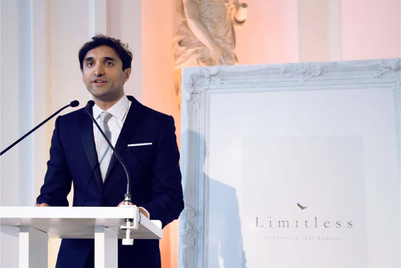
TimeTo has launched a new campaign to tackle sexual harassment in the advertising industry by asking: "Where do you draw the line?"
The work, created by Lucky Generals, will appear across print, outdoor, digital and social media channels over the coming months. The executions will feature powerful examples of uncomfortable situations of sexual harassment in advertising rooted in real-life examples.
They will be supported by trade media, including Campaign, as well as Pearl & Dean, which will screen the ads at industry screenings, with ad space donated by ITV and Sky Media.
Helen Calcraft, a founding partner at Lucky Generals who is on the TimeTo steering committee, said the campaign aims to get the whole industry to take collective action to change the culture. She explained: "Yes, it is about rooting out serial offenders and individuals, but is also about addressing the wider cultural change needed and that is bigger than any one individual."
Addressing the problem
Calcraft, who has spoken publicly about being sexually harassed in her 20s, said that even she had made the assumption that such harassment was a thing of the past. However, as the TimeTo research revealed, this is far from the reality. For instance, some 20% of female respondents aged 18 to 24 have already been sexually harassed in the few years they have spent working in the industry.
"There is still a climate where people don’t speak up and it is not being reported. We need to tell people it is OK to speak up," Calcraft added. "By advertising to our industry, we want to create a climate where people can speak up and be heard. We are calling on the leaders of our industry to set the tone and create the right culture."
The team identified the creative challenge as getting the industry to face up to this uncomfortable truth and take collective responsibility for ensuring sexual harassment stops. A key focus was making sure the communications engage the whole industry and avoiding the risk of opt-out. To create lasting change, the team identified the need to engage the right audience: perpetrators, deniers, sceptics, witnesses and activists, as well as those who have been harassed.
Shifting the lens
The films are designed never to show the image of the perpetrator of harassment to underline the message that it could be anyone in the industry.
The three spots highlight common scenarios in which sexual harassment takes place. As each scenario develops, the harassment incrementally worsens. At key points throughout the films, a physical red line appears, challenging the audience to determine at which point they would draw the line. They focus on three key settings: during a pitch win, at a hotel and in a client relationship.
In one execution, as a team celebrates winning a contract, it focuses on a young woman’s face as an older man congratulates her and becomes inappropriately touchy. A second film features a senior woman on a work trip working late in the bar of her hotel when a male client persistently asks her to stop working and have some "fun". The third spot underlines the fact that men can also be victims of sexual harassment, with a senior woman encouraging a younger male employee to flirt with a client.
Igniting a movement for change
Calcraft said the support for TimeTo, which came about as the result of a Wacl meeting addressing the issue of sexual harassment, has been incredibly heartening. She continued: "There is a genuine strong will in the industry to change this; it is not a bandwagon."
However, she added: "This issue is not solved by an advertising campaign; it is a two- to five-year endeavour."
This mission will include addressing the training gap that exists in companies when it comes to tackling sexual harassment, as well as highlighting the role of Nabs. "Our survey showed just how few people speak up – there remains a rule of silence and lots of fear, so we know it is important to highlight that Nabs is a safe space," Calcraft explained.
Yet it is clear that TimeTo is not daunted by the scale of the challenge. As Calcraft said: "We are just getting started and we are going to need long-lasting support from the industry. We should have the courage to do this – we should be brave and leading the way on this issue."
No-one should have to experience sexual harassment any time or anywhere. If you or someone you know needs someone to talk to, contact Nabs, which offers free confidential advice, guidance and support on 0800 707 6607 or [email protected].
A total of 114 organisations have signed up to the TimeTo code of conduct so far:



.jpg&h=334&w=500&q=100&v=20250320&c=1)

.jpg&h=334&w=500&q=100&v=20250320&c=1)
.jpg&h=334&w=500&q=100&v=20250320&c=1)
.jpeg&h=334&w=500&q=100&v=20250320&c=1)




.jpg&h=334&w=500&q=100&v=20250320&c=1)







.jpg&h=268&w=401&q=100&v=20250320&c=1)